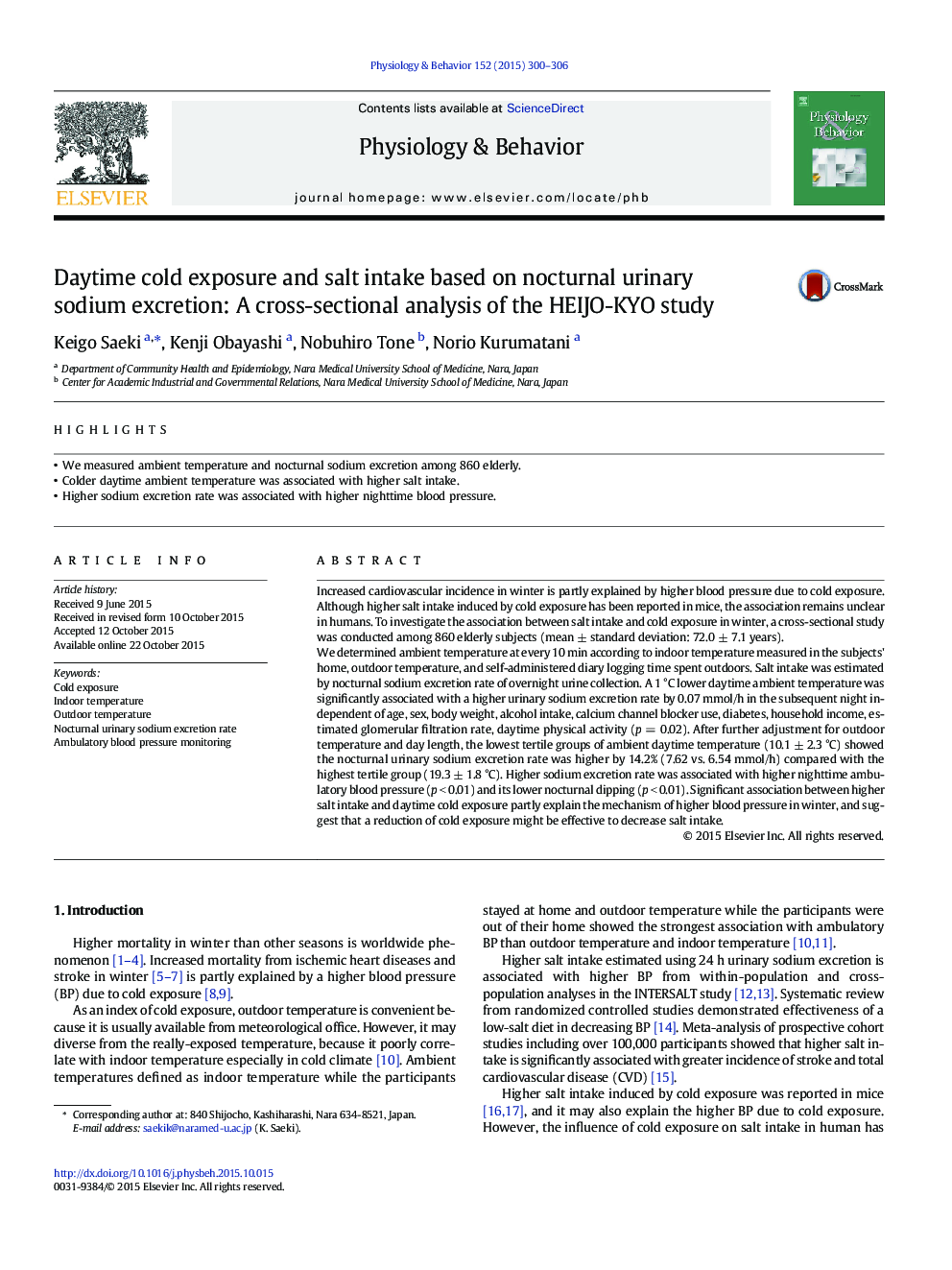| Article ID | Journal | Published Year | Pages | File Type |
|---|---|---|---|---|
| 5923105 | Physiology & Behavior | 2015 | 7 Pages |
Abstract
We determined ambient temperature at every 10 min according to indoor temperature measured in the subjects' home, outdoor temperature, and self-administered diary logging time spent outdoors. Salt intake was estimated by nocturnal sodium excretion rate of overnight urine collection. A 1 °C lower daytime ambient temperature was significantly associated with a higher urinary sodium excretion rate by 0.07 mmol/h in the subsequent night independent of age, sex, body weight, alcohol intake, calcium channel blocker use, diabetes, household income, estimated glomerular filtration rate, daytime physical activity (p = 0.02). After further adjustment for outdoor temperature and day length, the lowest tertile groups of ambient daytime temperature (10.1 ± 2.3 °C) showed the nocturnal urinary sodium excretion rate was higher by 14.2% (7.62 vs. 6.54 mmol/h) compared with the highest tertile group (19.3 ± 1.8 °C). Higher sodium excretion rate was associated with higher nighttime ambulatory blood pressure (p < 0.01) and its lower nocturnal dipping (p < 0.01). Significant association between higher salt intake and daytime cold exposure partly explain the mechanism of higher blood pressure in winter, and suggest that a reduction of cold exposure might be effective to decrease salt intake.
Related Topics
Life Sciences
Biochemistry, Genetics and Molecular Biology
Physiology
Authors
Keigo Saeki, Kenji Obayashi, Nobuhiro Tone, Norio Kurumatani,
